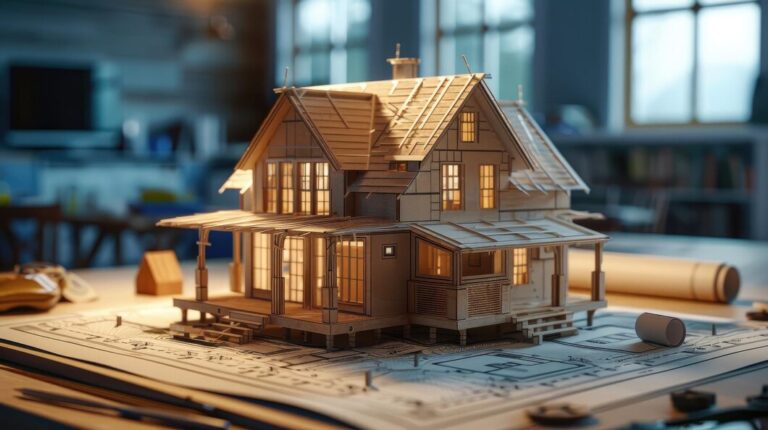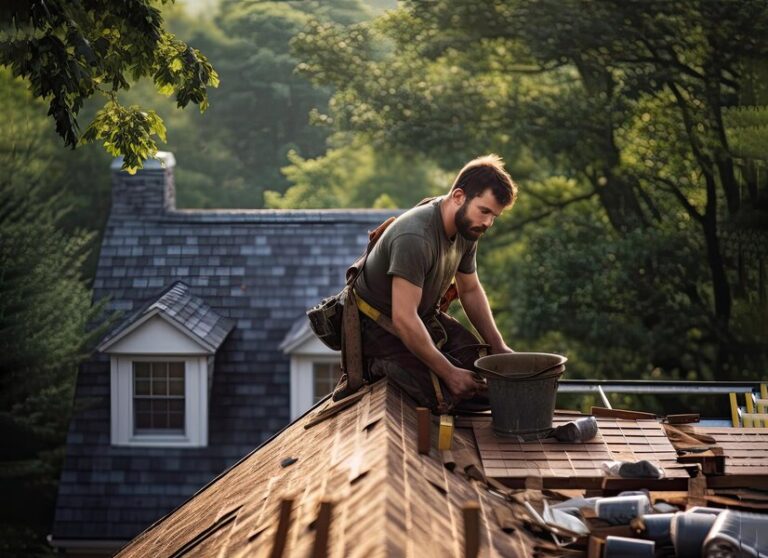Roof Maintenance: Common Myths and Facts
Maintaining your roof is essential for protecting your home from the elements and ensuring its longevity. However, there are many myths surrounding roof maintenance that can lead homeowners to make uninformed decisions. This article aims to debunk common roof maintenance myths and present the facts to help you take better care of your roof.
Myth 1: A New Roof Doesn’t Need Maintenance
Fact: One of the most common misconceptions is that a new roof requires no maintenance. While new roofs are built to last and come with warranties, regular maintenance is still crucial. Even new roofs can develop minor issues that, if left unchecked, can lead to significant problems down the line.
Why Maintenance is Important: Regular inspections can catch small issues such as loose shingles, minor leaks, or gutter clogs before they escalate. Maintaining a new roof ensures that it remains in optimal condition, extending its lifespan and maintaining its warranty.
Myth 2: Roofs Only Need Inspection After Severe Weather
Fact: While it’s true that severe weather can cause roof damage and necessitate inspections, waiting until after a storm to check your roof is not enough. Regular inspections should be part of your roof maintenance routine, regardless of recent weather events.
Year-Round Inspections: Scheduling bi-annual inspections, typically in the spring and fall, can help identify and address potential issues before they become severe. Routine checks can prevent minor damage from becoming major repairs, saving you time and money.
Myth 3: Roof Replacement is More Cost-Effective Than Regular Maintenance
Fact: Some homeowners believe that it’s better to wait until their roof needs replacing rather than investing in regular maintenance. This approach can be far more expensive in the long run.
Cost Comparison: Regular maintenance involves minor costs for inspections and small repairs, whereas a complete roof replacement is a significant investment. Maintaining your roof can delay the need for a full replacement, maximizing the lifespan of your existing roof and saving you money over time.
Myth 4: Moss and Algae on the Roof are Harmless
Fact: Moss and algae might seem like minor cosmetic issues, but they can cause serious damage to your roof if left untreated.
The Impact of Moss and Algae: Moss retains moisture, which can lead to the rotting of shingles and the underlying wood structure. Algae can cause shingles to deteriorate and lose their effectiveness. Regular cleaning and treatment can prevent these organisms from damaging your roof.
Myth 5: DIY Roof Repairs are Just as Good as Professional Work
Fact: While some homeowners are handy with tools, DIY roof repairs often lack the expertise and precision that professional roofing contractors provide.
The Importance of Professional Repairs: Professional roofers like bestchoiceroofing.com have the training, experience, and equipment necessary to perform repairs correctly. Attempting DIY repairs can lead to improper fixes, which might void warranties or cause further damage. Hiring a professional ensures that the job is done right the first time.
Myth 6: All Roofing Materials are the Same
Fact: There are various types of roofing materials, each with its own set of characteristics, advantages, and maintenance requirements.
Understanding Materials: Asphalt shingles, metal roofing, tile, and wood shakes each have different lifespans, costs, and maintenance needs. Knowing the specifics of your roofing material can help you tailor your maintenance plan to its unique requirements, ensuring better performance and longevity.
Myth 7: Gutters Don’t Affect the Roof
Fact: Gutters play a crucial role in roof maintenance by directing water away from the roof and foundation of your home.
Gutter Maintenance: Clogged or damaged gutters can cause water to back up onto the roof, leading to leaks and water damage. Regularly cleaning and maintaining your gutters ensures they function correctly, protecting your roof from water-related issues.
Myth 8: Small Leaks Aren’t a Big Deal
Fact: Small leaks might seem insignificant, but they can cause substantial damage over time if not addressed promptly.
Addressing Leaks: Even a minor leak can lead to water damage, mold growth, and structural issues. If you notice any signs of a leak, such as water stains on ceilings or walls, it’s crucial to address it immediately to prevent more extensive damage.
Myth 9: Roofs Don’t Need Ventilation
Fact: Proper ventilation is essential for maintaining the health of your roof and your home’s energy efficiency.
The Role of Ventilation: Ventilation helps regulate temperature and moisture levels in the attic, preventing heat and moisture buildup that can damage roofing materials. Ensuring your roof has adequate ventilation can improve its lifespan and reduce energy costs.
Myth 10: It’s Okay to Walk on the Roof
Fact: Walking on the roof can cause damage to shingles and other roofing materials.
Avoiding Roof Damage: Walking on the roof can dislodge shingles, cause granule loss, and create weak spots. It’s best to leave roof inspections and repairs to professionals who have the proper equipment and training to navigate roofs safely without causing damage.
Conclusion
Understanding the facts about roof maintenance can help homeowners make informed decisions and avoid costly mistakes. Regular inspections, professional repairs, and a proactive approach to maintenance are key to ensuring the longevity and performance of your roof. By debunking these common myths, you can better protect your home and maximize the lifespan of your roof.
Staying informed and taking a proactive approach to roof maintenance can save you time, money, and stress in the long run. Your roof is a critical component of your home’s structure, and taking care of it is essential for the safety and comfort of your household.







